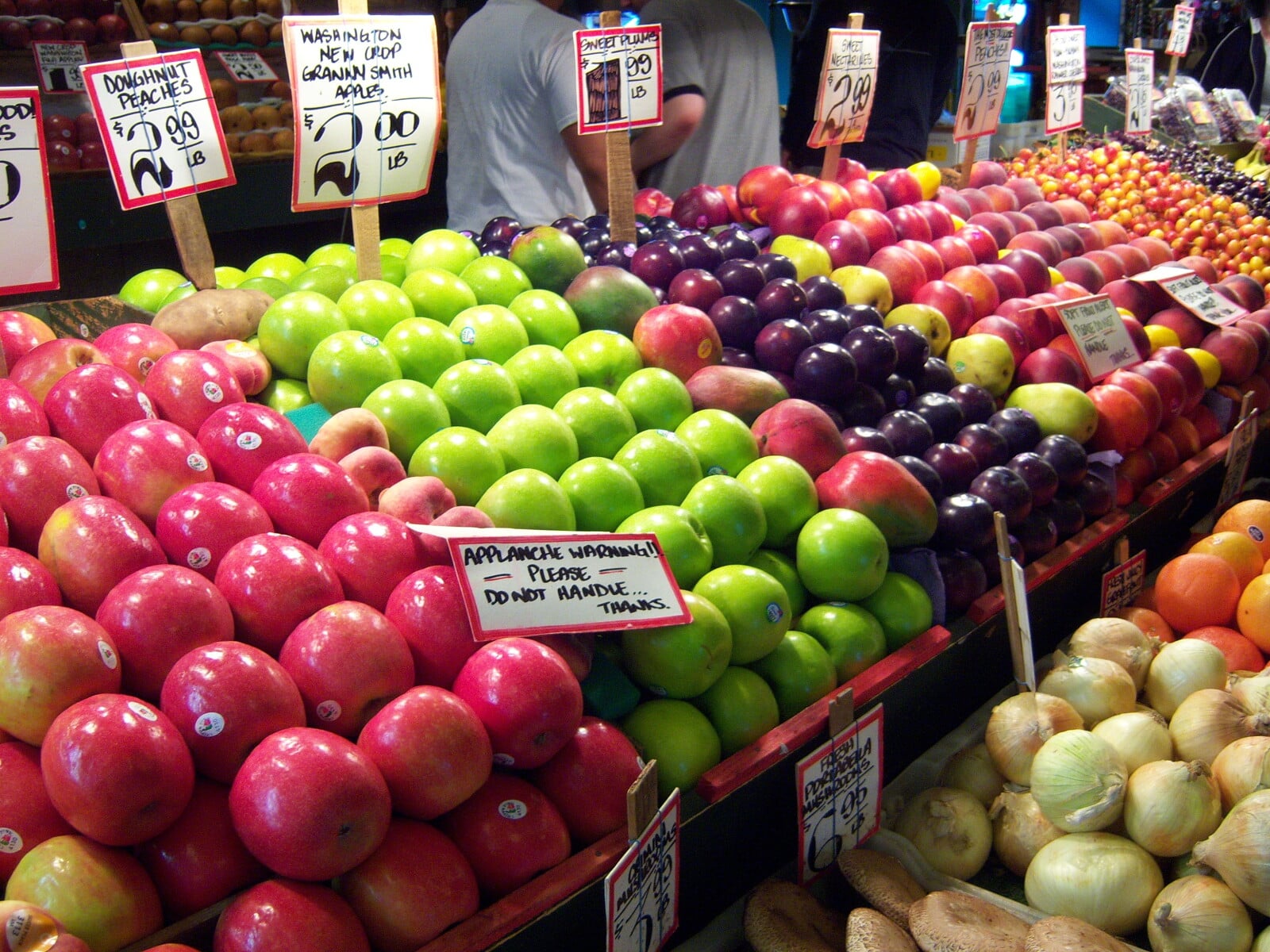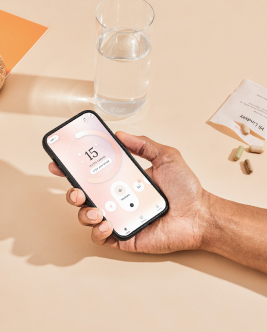nutrition
What Foods Are High in Chromium?
On This Page

Chromium is a trace mineral important for the metabolism of carbohydrates, proteins, and fats. Here is a list of ten high sources.
Chromium is a trace mineral found naturally in many foods. While food is the best way to get your vitamins and minerals, you can also find and take chromium as a supplement. Let’s explore more on what chromium is, how much we need, where to obtain it, and why supplementation may be beneficial.
There is limited research on the role of chromium and how much is required. Being a trace mineral, our body only needs a very small amount. Research suggests that chromium plays an important role in the metabolism of carbohydrates, proteins, and lipids (also known as fat).
Though found in many foods, the amount of chromium available to us will vary based on a range of factors, including growth and transportation, as well as how and whether it’s been fortified for nutritional reasons, as is often the case in fruit juice.
Often, soil and water conditions, as well as the conditions throughout the agricultural and manufacturing process, determine the amount of chromium available in a given food.
Even in the case of a well-balanced diet, chromium content may be suboptimal; hence the use of an effective supplement. This is due to the bioavailability or absorption of this nutrient.
Most dairy foods, meats, and fish are low in chromium. Grain products, fruits, and vegetables vary greatly, but some may contain an abundant amount. As mentioned, chromium content is dependent on the growth and processing of these foods.
Chromium is measured in micrograms, also known as mcg. Here is a list of high food sources of chromium.
Grape Juice
Grape juice is an excellent source of chromium. Just one cup contains a total of 7.5 mcg, 21% of our Daily Value (or %DV) for chromium.
Percent Daily Value (%DV) displays how much a nutrient is contributing to your total daily nutrition – typically based on a standard 2000-calorie diet. You may have seen %DV noted on the right side of the nutrition food label. A percentage of 5% or less is considered a low source, while 20% or more is considered a high source.
As a rule for good health, seek out foods with vitamins, minerals, or fiber in this “high source” range, while keeping sodium, saturated fat, and added sugar within the “low source” limit.
Since fruit juice contains plenty of natural sugar, when selecting a grape juice, look for one with 100% juice and no added sugar.
Orange Juice
If you prefer orange juice over grape juice, it also provides chromium to the diet, although a much smaller amount.
Orange juice is a good source of chromium, providing 2.2 mcg for one cup or 6% of the DV. While this does not provide as much chromium, orange juice is a rich source of vitamin C and antioxidants. Antioxidants ward off free radicals, which protect our cells from damage from oxidative stress.
As with grape juice, be sure to review the label, and be conscious of added sugar.
Apples
Another fruit that can provide chromium to the diet is an apple. One medium apple with the peel contains 1.4 mcg of chromium, or 4% DV. It may just keep the doctor away – providing further antioxidants and fiber to support our gut and heart health.
Apples can be a great satisfying snack paired with some protein like peanut butter.
Broccoli
One cup of broccoli provides 22 mcg of chromium – a whopping 62% of our Daily Value. Broccoli is a cruciferous vegetable, which is known to provide the body with many health benefits. Broccoli is a high source of vitamin C and vitamin K, and a good source of potassium and folate.
As mentioned, antioxidants can protect the body from free radicals and cellular damage. Vitamin C may also support our immune system and improve iron absorption. When consuming plant-based proteins, it is recommended to add vitamin C to increase the amount of iron the body absorbs. For example, next time you’re eating a tofu stir fry, be sure to add some broccoli to the mix.
Vitamin K is a fat-soluble vitamin found in many dark green leafy vegetables. Its main role is to help with blood clotting. It is important to speak with your doctor about dietary intake choices when taking certain medications.
Tomato Juice
While tomato juice doesn't provide as much chromium as broccoli, it still contains 1.5 mcg for every cup. This is 4% of the Daily Value. Tomato juice also contains many vitamins like vitamin C and vitamin A.
Tomatoes are also high in an antioxidant called lycopene – recognized for its rich red color.
Green Beans
Green beans, or string beans, will provide 1.1 mcg of chromium, or 3% DV, for a half cup. Green beans are an easy source of non-starchy vegetables to add to any meal. You can steam, roast, boil, and even microwave them for an easy and refreshing side dish.
Turkey Breast
Animal-proteins are usually known to provide a good source of B vitamins. While this is true, three ounces of turkey breast will also provide 1.7 mcg of chromium, or 5% DV.
Turkey breast is a complete protein source that can be easily incorporated into a balanced meal. While not many other animal sources hold much chromium, turkey may still contribute a bit more to your diet.
Eggs
While one egg only contains 0.5 mcg of chromium, they are still a nutrient-dense food. Eggs have been questioned and feared for many years, but we now know that seven eggs each week is safe and healthy to consume. If you have underlying health conditions, be sure to consult your doctor and a registered dietitian for further guidance.
Eggs are a good source of protein, while also providing a variety of different fats, vitamin D, vitamin A, and antioxidants. They have the added benefit of being one of the more affordable sources of animal protein.
Whole Wheat Flour
Whole wheat flour can help you meet your chromium needs for the day as well. A whole wheat English muffin is particularly high in chromium, providing 3.6 mcg or 10% DV. One slice of whole wheat bread has 1 mcg or 3% DV.
Choose whole-grain products to boost your fiber intake throughout the day. Fiber digests slowly in our digestive system, which will sustain our fullness for a longer period of time.
Health benefits of chromium
Chromium is a trace mineral that supports the metabolism of the macronutrients: carbohydrates, proteins, and fats.
There are two forms of chromium: trivalent and hexavalent. Chromium in the trivalent form is safe, available in food and supplement, and easily absorbed. Chromium in hexavalent form is a toxic byproduct of stainless steel. This article relates to the trivalent form of chromium.
How much chromium do we need?
Chromium needs vary depending on many factors.
Adequate Intake (AI) for ages 9 and above ranges from 21 to 25 mcg per day for females, and up to 35 mcg per day for males.
The Recommended Dietary Allowance (RDA) is 25 to 35 mcg daily for ages 19 to 50. For ages 51 and over, the recommendation rises to 20-30mcg per day.
Chromium needs of pregnant people and lactating women increase to 29 to 45 mcg per day. Always speak with your doctor before taking new supplements when pregnant or breastfeeding.
Chromium deficiency has not been reported in healthy populations. Most multivitamins contain chromium, but supplements containing just chromium are available.
The Bottom Line
Chromium is a mineral our body needs in very small amounts. It may play an essential role in the metabolism of carbohydrates, proteins, and fats. While deficiencies are uncommon, well-balanced diets may be lacking in chromium. Yet, there is still limited research on this mineral.
This article reviewed the high food sources of chromium. As you can see, foods that contain chromium also come with an array of other nutrients and health benefits.
If you feel your diet may be lacking in this mineral, speak with your doctor about possible supplementation. As well, see our chromium supplement for more information.



